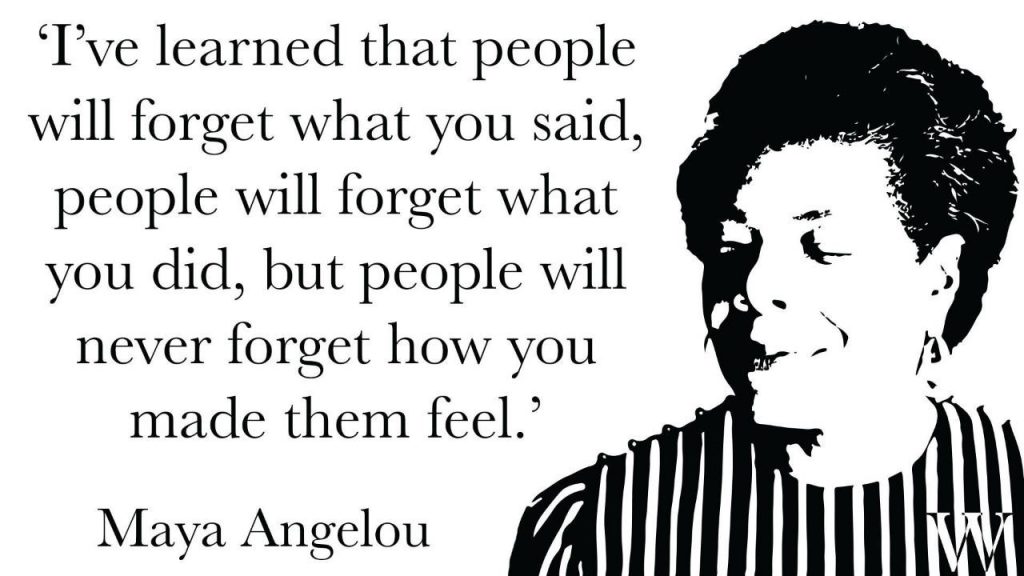When you communicate in your work, how much thought do you give to how that information is received? The truth is that most of us focus far more on what we put out than how others will take it in. We fall into our regular habits, styles and methods without thinking about the effect it can have on the people we are communicating with. So how can we ensure our communications are as inclusive as possible so that we have the desired impact?
Here are three tips to get you started with more inclusive and effective communication:
1. Think about how you want people to feel
The amazing Maya Angelou said, “people will forget what you said, people will forget what you did, but people will never forget how you made them feel.”
So much of communication is not about the actual words. The details of particular words and pieces of information are often forgotten very quickly. But the overall impact is what remains for a long time. How you communicate is often more important than what you say, and the most important element is how you make people feel. When you set out to communicate, in any form, consider what feeling you want to leave your audience with.

2. Remember it’s about more than words
Communication is about more than the words you say or write. How much thought do you give to your body language when you’re talking?
- Words represent just 7% of human communication related to feelings and attitudes
- Tone of voice accounts for 38%
- And the remaining 55% comes from non-verbal sources, such as body language and facial expression
The way you use your voice will affect how people receive your communications, so think about the volume and the pace that you use in different situations.
Think about the tone of your voice; it can have such an impact on how people take in what you say. What kind of feeling do you want to leave them with? Are you conveying that in your voice? Or is your tone saying something very different? Are you trying to inspire people but coming across as bored, or aggressive? Tone also comes across in written communications, and you may have heard people saying that they thought an email seemed angry or snappy when that wasn’t the intention of the writer at all.
3. Style matters
People receive information in a wide variety of ways. We’re all designed differently! For some people they need to see pictures and colours to process what’s being communicated. Others need lots of detail to make sense of what they are being told, whereas others prefer the exact opposite. And for some, it’s about the sound, from tone of voice, to volume, to music, that really matters.
If you’re working in a team, you will get to know how people work, and the things you need to be aware of. You might need to caption your video calls, or book a sign language interpreter for meetings. If you don’t know much about the people you are talking to, or you’re communicating to a large group, then think about how you can present information in different ways to appeal to everyone.

There are many other things to think about to make your communications inclusive and appealing to everyone, and to make sure your message reaches all the right people.
If this has got you interested, head to our online school and sign up for our interactive Inclusive Communication training course to learn more.
